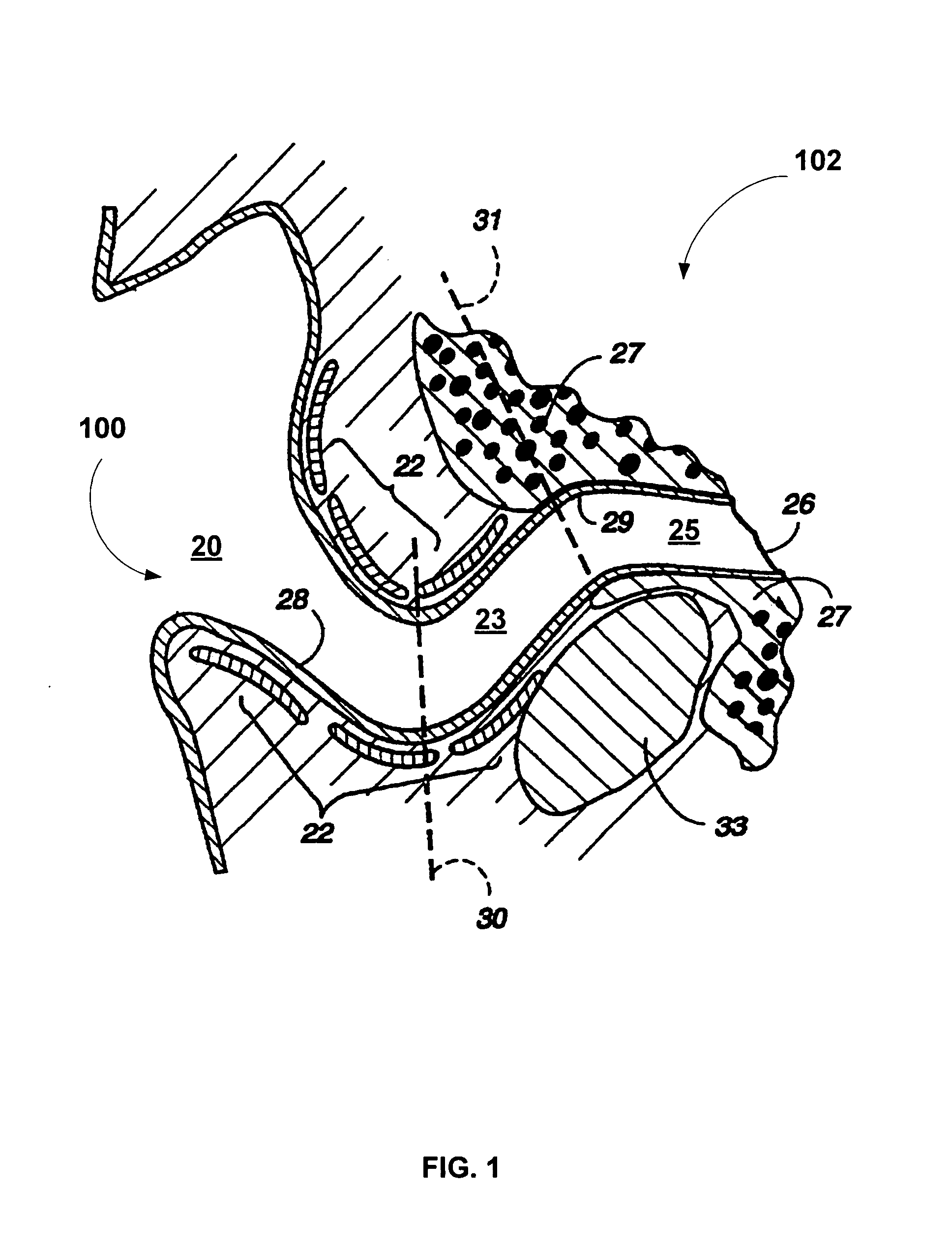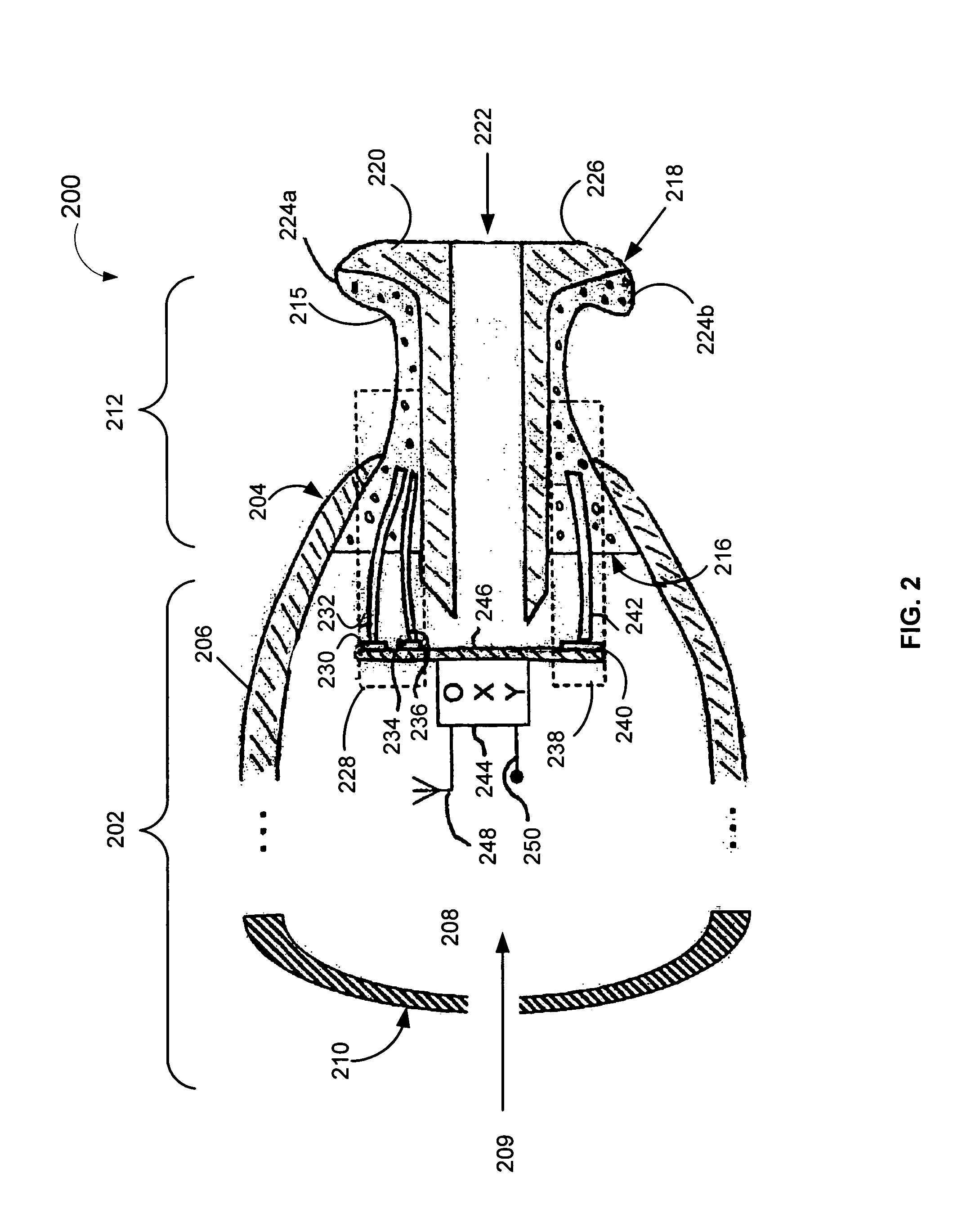Pulse oximetry methods and apparatus for use within an auditory canal
a pulse oximetry and auditory canal technology, applied in the field of medical devices, can solve problems such as inaccurate measurements
- Summary
- Abstract
- Description
- Claims
- Application Information
AI Technical Summary
Benefits of technology
Problems solved by technology
Method used
Image
Examples
Embodiment Construction
[0013]FIG. 1 show a cross-sectional anatomical view of an auditory canal 100 in the transverse plane of a portion 102 of a head. The auditory canal 100 is generally S-shaped and can be described as having three regions. A first region 20 is the medial concha cavity, which is surrounded by cartilaginous tissue 22. A second region 23, which is separated from the first region 20 by a first bend 30 (the “proximal bend”), is also surrounded by cartilaginous tissue 22. A third region 25, which is separated from the second region 23 by a second bend 31 (the “distal bend”), defines the final auditory canal region near the tympanic membrane 26 and is surrounded by dense bony tissue 27.
[0014]Vascular tissue 28 covering the first and second regions 20 and 23 is relatively thick and has a well developed subcutaneous layer that allows some expansion to occur. In contrast, vascular tissue 29 covering the third region 25 is relatively thin and, thus, little or no tolerance for expansion exists in ...
PUM
 Login to View More
Login to View More Abstract
Description
Claims
Application Information
 Login to View More
Login to View More - R&D
- Intellectual Property
- Life Sciences
- Materials
- Tech Scout
- Unparalleled Data Quality
- Higher Quality Content
- 60% Fewer Hallucinations
Browse by: Latest US Patents, China's latest patents, Technical Efficacy Thesaurus, Application Domain, Technology Topic, Popular Technical Reports.
© 2025 PatSnap. All rights reserved.Legal|Privacy policy|Modern Slavery Act Transparency Statement|Sitemap|About US| Contact US: help@patsnap.com



